It’s no secret that Hudson County is very much a dog-friendly area, despite its urban sprawl. There are so many four-legged friends around the Mile Square that the City of Hoboken had to issue some guidelines on how to pick up after your furry pal. Of course, with so many pups living and enjoying city life in our area, it was only right we spoke with a local dog trainer, Kathleen Chirico of 4 the Love of Dogs NJ, to answer some of our readers’ most pressing, dog-related questions! Keep reading to find out some of the most pressing questions + tips from a Hoboken + Jersey City dog trainer.
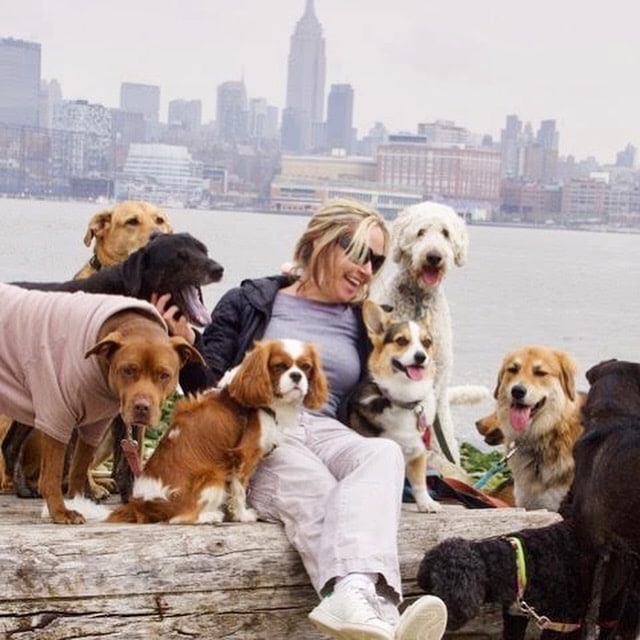
Disclaimer from Kathleen: Prior to reading the answers below, please be advised that these are general guidelines. I did not address psychological development milestones or prior trauma. In cases of difficult behavioral problems, as well as puppy socialization, I greatly recommend consultation with an experienced professional. Trying to go it alone could make problems much more severe or even cause new ones to arise.
Reader Question:
How do I desensitize my dog to loud noises such as trucks opening and closing, cars going over speed bumps, or people screaming? How do I stop her from pulling me home out of fear in these situations?
There are several tools you can use in combination to create the best results. First, I would recommend not allowing the dog to pull on the leash ever. Instead, stop, get in front of the dog, and tell her to “wait” or “sit” {or both}. Once she is in the “sit” position, in a calm voice tell her “good sit” and give her a thumbs up. After, tell her “heel” and start walking again. Make sure to not let her run or direct the walk. While our impulse is usually to get out of a tough situation as quickly as possible, the better course of action is to slow down and calm the dog before proceeding. The more often a dog walks calmly past a situation that is scary to her, the less alarming and more commonplace these inciting objects, sounds, etc. become.
See More: Top 5 Tips for New Dog Owners
Also, you can record or download some of the sounds and use them for training at home. First, play these sounds. Then, get in front of your dog and have her “sit.” Once she is calm, give her a treat. Play these sounds at a volume which produces the fear but at a level where she can cope and follow your instruction. In order to properly desensitize dogs to threatening events, it is extremely important to have her focus on your guidance and a more calming activity that she is used to receiving rewards for — such as basic commands. While doing any training exercises, be sure to never force her to do anything or yell. Conversely, you must resist the urge to soothe as either of these actions will exacerbate the fear.
Reader Question:
For first-time dog owners, are there any recommendations as far as breeds, especially if the owner has kids?
While breeds were created for certain purposes {i.e. hunting mice, herding sheep, etc.} and, thus, exhibit personality traits or characteristics in common with dogs of similar breed type, the more important question is, “How do I pick a dog who is most appropriate for my family?” Any breed of dog can exhibit bad behaviors if not reared properly. Whether you choose a pure breed, mixed breed or an All-American dog, be mindful of how much time you will have to work with your dog or puppy. Ask yourself if your home is chaotic or quiet. What role will the dog have? Would this type of dog be happy in this environment?
Dogs are a big responsibility. Like us, they require proper training to learn things like empathy and respect for the personal space of others. While researching breeds, one should also research proper training and dog behavior specialists. If you want to prevent problems down the road, train your new canine family member from the start regardless of their breed.
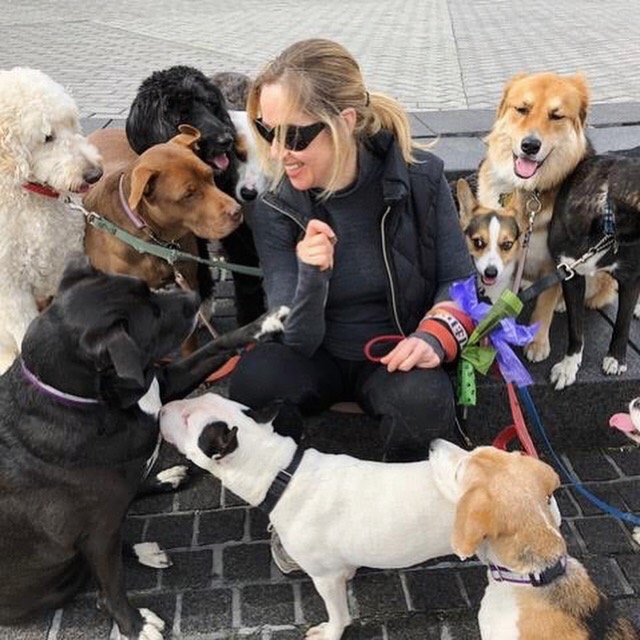
Reader Question:
What are the best breeds for staying home during the day while you go to work {with a dog walker midday}?
While there’s no guarantee that a dog of any breed would not experience anxiety when left home, I would recommend steering clear of dogs with high energy and/or highly intelligent working breeds.
Herders, for example, do not like to be alone. They seem to be more prone to anxiety because they were bred for working closely with humans and keeping order. I would recommend adopting a middle age or senior dog from the shelter or rescue group. These dogs tend to have lower energy levels and are in need of great homes like yours.
Also, dogs crave a family bond just as we do. They require exercise and positive interaction within their environment. If you can’t provide these necessary requirements for his wellbeing, don’t get a dog.
Reader Question:
How can I get my dog to walk without pulling and/or biting his leash when he doesn’t want to go a certain direction?
It sounds like your dog could be either be anxious or trying to force play.
He is being controlling, so don’t give him what he wants – your attention. The best thing to do is a sharp “eh” correction followed by loosening the leash, so it’s not taught.
Do not pull. While the leash is loose, make sure your back is to the dog completely ignore him. Once he’s calm, start walking again tell him to “heel” so he has a command to focus on while walking calmly.
Then, pick up the pace incrementally. If he starts again, repeat. When he is walking by your side {in line with your heel}, reward him with a treat as you tell him “good heel.” Make sure to practice when he is not excited.
Reader Question:
How can I put a stop to my dog’s leash aggression? What causes it?
In a word, “threat.” Typically, it’s a misperception on the dog’s part and could stem from fear. Many dogs, who have not been properly socialized perceive other dogs in a confrontational way. Changing this perception involves a commanding presence, as well as a method of redirection that, over time, produces a positive association with the fear-inducer.
More often, the trigger for lunging is insecurity or possessiveness. When we give our canine companions indiscriminate affection, they sometimes get the impression that we belong to them. In such cases, dogs can become overprotective of that bond, and, thus, perceive others as a threat to your relationship. Think of a jealous boyfriend who gets upset when men, innocently, talk to his girlfriend.
While finding the root cause is important, even if you don’t know, you can start to curtail the behavior. One thing I suggest from the very start is to not let the dog be excited on the leash when he meets other dogs or people.
Also, never let the dog pull under any circumstances. Anytime he pulls, he should get corrected {see information above on how to work on this}.
While a swift, non-abrasive correction may be necessary in order to gain his focus, yelling or becoming frustrated will backfire. Get in front of him, back him down, and tell him to “sit”, then “stay.” Once calm, tell him “heel” and proceed. All of these commands must be worked on daily in a positive way with treat rewards, stepping up the level of distractions over time.
Do not attempt a meeting with another dog unless your dog maintains a relaxed body posture and you are also calm and confident. You should only socialize him with other dogs once he has learned to be calm in their presence. Because the “how” is more important than “what” you do in these situations, it’s best to work with a professional if you aren’t sure if you are managing this problem correctly.
Reader Question:
My 9lb dog howls when we leave, which is not ideal in an apartment with neighbors next door. She saw a behavioral veterinarian who suggested medication and more exercise. We have a dog walker who takes her for four hours every day. Anything else I could try?
Teach your dog “stay.” Once she learns the concept, you will need to, incrementally elongate the time the dog is staying. Step up the time until she is calm with you out of the room for several minutes. This exercise is important because it teaches dogs coping skills. She will be able to get used to the fact that you leave and come back.
Another exercise that’s important does not involve treat rewards and should be practiced as often as possible when you’re home. Without a word, just leave, come back, and ignore the dog completely until she’s calm. It is meant to be a non-event. Repeat this exercise often but make sure you only leave when she is calm. From there, increase away time in small, achievable increments. In time {typically months}, she will learn that time away is temporary.
When you leave or come home, do so calmly. Resist the urge to celebrate or feel guilty. While dogs are natural empaths, they don’t know why we feel what we feel. Weak emotions like doubt or guilt will make them anxious or overprotective. On the flip side, if you generate extreme excitement upon return it can create confusion about your absence.
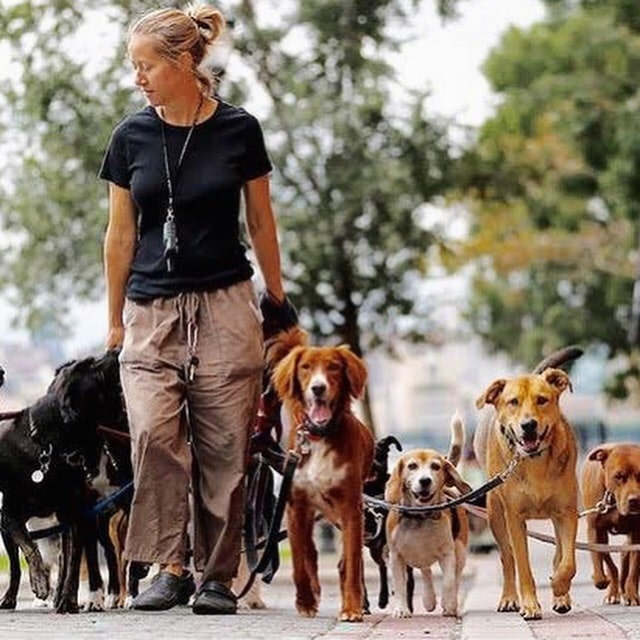
Read More: 18 Hoboken Girls Twinning with Their Dogs: Mother’s Day 2019 Edition
Reader Question:
What are the best ways to socialize my dog? I like taking her to the dog park and I want her to enjoy it, but she hates it! Is this something I should keep trying to push or just realize that she’s more of an introvert?
Not all dogs enjoy romping around with other dogs. Older dogs typically prefer to play and spend time with their human families. However, if this is not the case and you feel your dog is anxious or just doesn’t know how to socialize, there are ways to help her get to know and enjoy other dogs.
First, you should start with play dates. Choose friendly dogs who have similar dispositions and energy levels and have small group interactions. Also, while at the dog run, you should interact with your dog and other dogs. Let your dog follow you around to say hello to other dogs rather than just leaving her on her own. This involves patience and calm energy.
With that being said, never force socialization. If your dog tends to be anxious or aggressive around other dogs, the dog run is not a good place to bring her. It can be too stressful and lead to bad behavior.
Reader Question:
How can I help my dog be more social? How can I also help her with her anxiety?
First, don’t try to do everything for her. Dogs don’t learn coping skills or proper socialization when we constantly keep them away from any difficult situation. In a sense, it’s up to us as parents of dogs to be like parents of human children. We need to help them learn how to be individuals. If we don’t give the dogs a chance to be self-reliant, then they won’t know how to be independent.
Conversely, if you force her into an overwhelming situation, she may learn to dislike it entirely. In general, start slow. Let your dog spend time with one other human. For example, you can have a friend take her for a walk. You can also set up a playdate for your dog with one other dog. If your dog seems scared or unsure, just slow it down take it step-by-step. Pack walking is also a great way for your dog to socialize with other dogs in a manageable fashion because they can be around each other at an acceptable distance on an upbeat venture. Don’t ever freak out if your dog shows a little fear as this could fuel her anxiety. Make sure you are confident and relaxed while working with her. Also, please see the answer above on how to properly socialize a dog with other dogs.
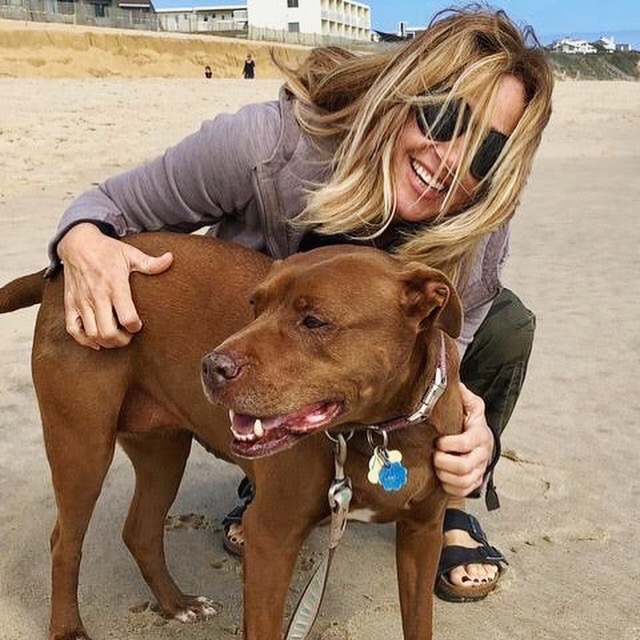
Reader Question:
How do I get my dog to poo on the leash?
Your dog will only relieve herself where she knows it’s acceptable to do so. This means she is looking for scent and surroundings that mean “bathroom” to her. Take a tiny bit of her poop and put it on areas {local tree, curb, etc.} where you want her to go. It will still take her time to recognize that it’s OK so you may have to do this for a few days or longer. When she does finally use that area, praise and give a treat reward immediately. Also, attach a command to the behavior, such as “good potty,” when you reward her. Repeat these until she fully understands {likely weeks}. The leash should be loose while she sniffs out the area.
Reader Question:
Why does my dog have an accident overnight every single time I have a friend sleepover?
It could be a form of insecurity or territoriality. She may be happy that someone else is there to see her but not necessarily happy because that person is taking your devotion. She is not doing this to punish you but rather to solidify her place in your home. To work on this, you should do boundary work with her to make sure she knows her place. She should know that you are in charge and it is her job to follow your rules. Work at obedience cues like “down,” “stay,” etc. She should have her own bed and get rewards for going to “bed” when you ask.
Reader Question:
How do I train my dog to not bark when someone or another dog walks in the hallway outside my apartment?
You need to claim the home’s entryway or door space as yours to control. When the dog runs to the door barking, get between her and the door, make a sharp sound to get her attention, and send her away calmly. You’ll have to repeat this several times because dogs naturally alert us to potential danger. Repeating this exercise will let her know that you decide what is and isn’t dangerous. If she doesn’t run to the door when someone passes by it, get in front of her while making a sharp “shh” sound, tell her “sit” and “leave it” in a very calm yet commanding voice. Keep in mind, this is not a punishment, it’s guidance and direction.
Reader Question:
My one-year-old dog seems to be potty-trained so why from time to time does he have “accidents” while I’m in the same room?
Some dogs pee when they are stressed or anxious. They also tend to do it if they don’t enjoy going outside or even to get your attention. Others pee to scent mark and claim an item or area as his or hers.
It sounds like he’s not 100% potty-trained. You’ll need to catch him in the act, make a sharp correction sound, not scary though, and run him directly outside until he pees then tell him “good potty” {or whatever your command is for this} and reward with a treat immediately.
Also, always bring your dog for a quick walk, showing him where to potty prior to entering the place that you are visiting. He might get confused and go inside, especially if he smells an old scent of urine, even if we don’t smell it. If he does have an accident, use a product like Nature’s Miracle, which takes out urine smell that we might not detect but dogs can.
Peeing inside could also be a sign of urinary tract infection or another illness so definitely have him checked out by your vet. Another thing to consider is if he drinks more than usual due to high levels activity like play, or warmer weather, or increased heating inside. He will need to go out more often than you are used to.
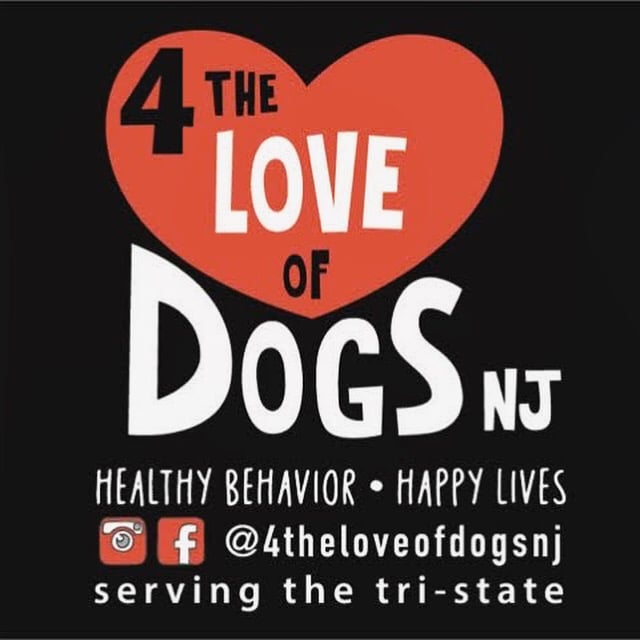
Thank you so much, Kathleen, for all this helpful info. Dogs, just like people, continue to grow and change. With that being said, continued training is a must. If you are in need of assistance with your pup, don’t be afraid to reach out to a professional. There is no shame in doing so and will make for a much happier existence for both you and your dog. If you’d like some additional help, contact Kathleen at 917-494-2976.
Do you have any tips for training dogs? Let us know in the comments!










